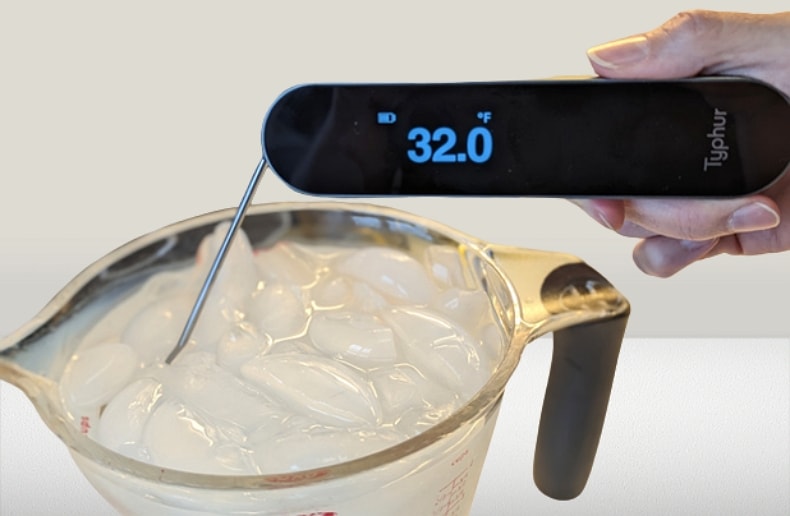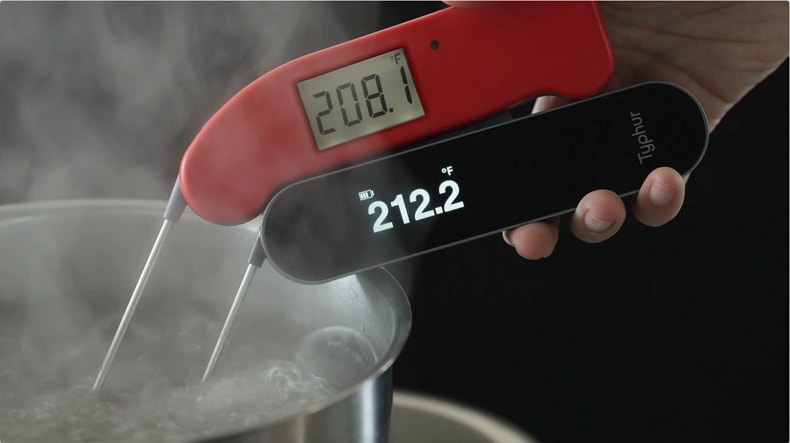When you’re trying to get food on the table or you want to get those burgers on buns for guests at a backyard barbecue, you want to do it as fast as possible — safely.
The best way to do that is by checking the temperature of your food with an instant-read thermometer. When you’re looking for a good thermometer that checks temps fast and accurately, you want to consider the “response time.”

Precision, Speed, Elegance
Why FAST matters in an instant-read thermometer?
Instant-read thermometers are widely used by folks who like to barbecue or grill. If you’ve ever spent time flipping burgers or turning brats over an open flame, you know how the temperature of the food on the grill changes fast and fluctuates — that makes it challenging to get temperature readings, making an instant-read thermometer an important tool in your barbecue arsenal.
You don’t want to leave your meat to slower thermometers — they can wreak havoc on grilling plans, here’s why:
- Delayed Decision Making: Slower readings can result in delayed decision-making about when to take the food off the grill. If the thermometer takes longer to provide an accurate reading, you may have to wait longer to figure out if the food has reached the desired temperature or level of doneness.
- Prolonged Exposure to Heat: Slower readings can lead to prolonged exposure to heat for the cook. To get an accurate temperature reading, you may need to hold your hand or the thermometer closer to the heat source for longer periods while you’re waiting. This can put you at risk of injury and your food may end up overcooked.
- Inaccurate Readings: One of the significant risks of slower output is the potential for inaccurate temperature readings. If you don’t wait long enough for the thermometer to reach the actual temperature, you may take the meat off the heat too early or leave it on too long, resulting in incorrect readings. This can lead to undercooked or overcooked food, impacting both taste and food safety.
What are time constants and full reading time?
Time constants and full reading time are concepts related to the speed and performance of thermometers.
- Time Constants: The time constant of a thermometer refers to how quickly the thermometer can detect and adjust to temperature variations.
- Full Reading Time: The full reading time of a thermometer refers to the time it takes for the thermometer to display a stable and accurate temperature reading after being inserted into the food or ambient conditions being measured.
Both time constants and full reading time are important considerations when evaluating the performance of a thermometer, especially when food safety is a priority. A thermometer with a shorter time constant and faster full reading time provides more timely and accurate temperature readings.
Each time constant represents the time it takes for the instrument to reach 63.2% of its final value. By multiplying the time constant by five, you can estimate the full reading time, which is the duration required for the instrument to reach a stable and accurate temperature reading.
For example, the full reading time of Typhur InstaProbe is 0.5s, which means the technical response time of the InstaProbe is 0.15s (time constant).
You can check the full review of Typhur InstaProbe.
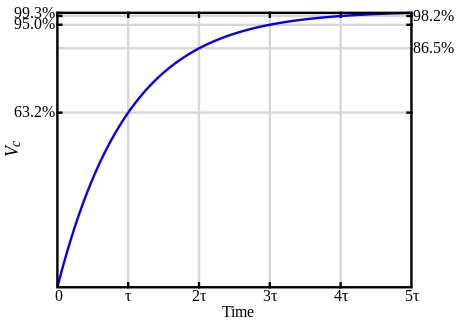
When you choose an instant-read thermometer, you must check whether its speed time claimed is full reading time or time constant.
How does temperature measurement work?
Temperature measurement relies on different principles and technologies, depending on the specific type of thermometer being utilized.
Below, we focus on thermocouple thermometers. This technology is commonly used in instant-read meat thermometers.
Thermocouples
Thermocouples work by measuring thermoelectric potential to determine temperature. Based on the principle of the thermoelectric effect, they utilize the potential difference generated at the junction of two dissimilar metals to achieve temperature measurement.
The working principle of a thermocouple is evident in the image below. It comprises two metal wires, Wire Type A and Wire Type B, made of different materials. As the temperature increases at the junction of the left wires, the gauge on the right displays the corresponding temperature change clearly.

The application of thermocouples on instant food thermometers
The design of instant-read meat thermometers you can find on the market now is shown in the diagram below:
- 21: Needle tip tube body
- 221: Thermocouple Junction
- 22: Thermal Conducting Material
- 23: Metal Wires of the Thermocouple
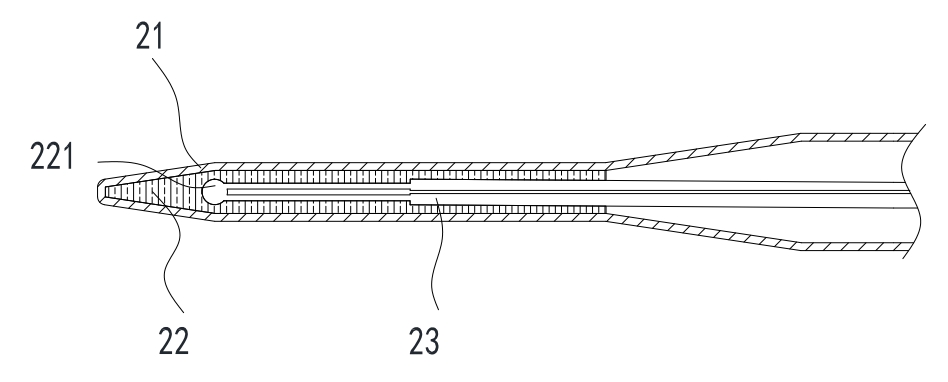
When a probe, like the one shown in the image above, is inserted into food, heat undergoes a two-step conduction process: from the needle tip and tube body (21) to the thermal conducting material (22), and finally to the thermocouple junction (221). This sequential conduction introduces a time delay before reaching the thermocouple junction.
So, is there any chance to optimize the reading speed? The answer is YES!
World’s fastest instant-read thermometer: 0.5s full reading time
While researching ways to improve the response speed of the thermometer, Typhur’s product development team discovered that to enhance the response speed, it is necessary to reduce the response time for thermal conduction to reach the thermocouple junction.
What is DTCI technology?
The InstaProbe’s thermocouple is soldered to the tip, allowing for direct contact with the heat source. This integration technique is known as Direct Contact Thermocouple Integration (DTCI™), which is the main difference between InstaProbe and other instant-read thermometers on the market.
The development team applied DTCI to optimize the InstaProbe’s design and improve the response speed. When soldering the thermocouple junction onto the probe’s needle tip, one part is on the needle tip itself, while the other part is within the needle tip tube. The direct contact of the junction with the heat source allows for a rapid response to temperature changes through thermal conduction, bypassing the needle tip tube and thermal conducting material.
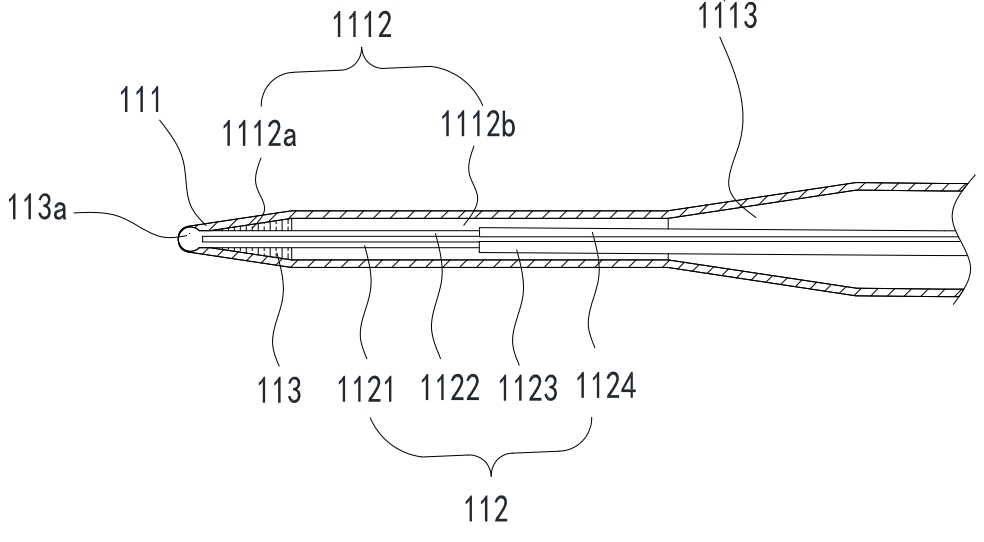
The probe’s tube body is filled with thermal conductive silicone grease. Without this filling, the heat source would come into contact with air after passing through the junction — air has much slower thermal conductivity compared to metal.
As a result, Typhur InstaProbe takes a full reading in 0.5 seconds or less. It’s the world’s fastest instant-read thermometer ever seen — typical digital thermometers available on Amazon or at big box stores take 10 or 15 seconds for a full reading and your grandma’s dial thermometer can take even longer.
How to verify the response time of your thermometer?
To test the response time of your instant-read meat thermometer, you can prepare an actual timer and an ice bath and following these steps:
- Prepare an ice bath
Fill a container with ice and add cold water. Stir the mixture to ensure a consistent temperature.
- Set up the thermometer
Calibrate and ensure your instant-read meat thermometer is ready for testing. Refer to the manufacturer’s instructions for any specific setup requirements.
- Start the timer
Begin the timer simultaneously by inserting the thermometer probe into the ice bath. Note the exact starting time.
- Monitor the temperature change
Watch the thermometer’s display as the temperature reading gradually decreases. Continue to monitor until the temperature stabilizes at 32°F (0°C).
- Stop the timer
Once the temperature stabilizes at 32°F (0°C) on the thermometer, (i.e. for InstaProbe, since the accuracy spec is ±0.5°F (0.3°C), you should stop the timer with the display reaching 31.5°F~32.5°F (or 0.3°C). Stop the timer and note the elapsed time.
- Calculate the response time
Subtract the starting time from the stopping time to calculate the response time of your instant-read meat thermometer.
Conclusion
When you are shopping for thermometers, the speed of response is an important factor to consider. Different thermometer technologies have varying response times, and even a few seconds can have a significant impact depending on the specific application.
Some manufacturers may focus on time constant specifications, which may not accurately reflect the full reading capability comparable to the Typhur InstaProbe.


